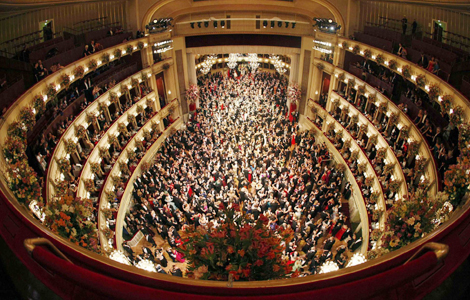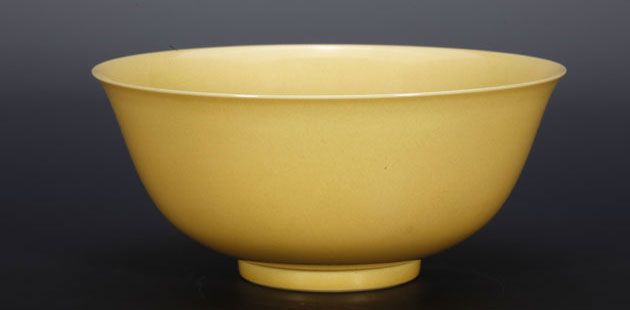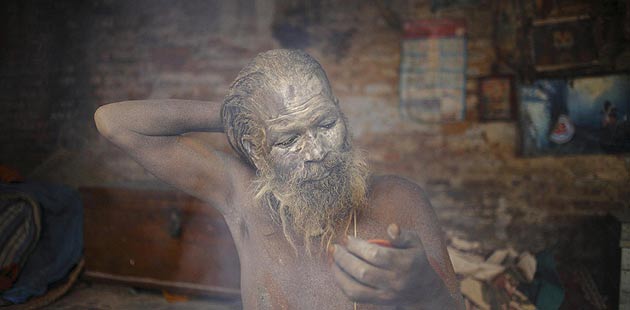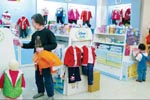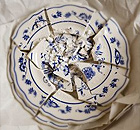Sing, dance and buy for New Year
Updated: 2012-02-21 10:39
By Dachiong and Tong Hao (China Daily)
|
|||||||||||
|
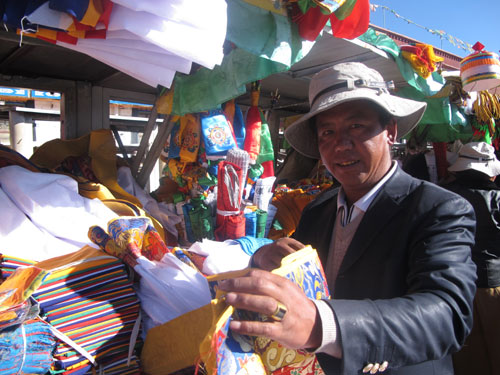 Toblag, from Nyemo county, the Tibet autonomous region, sells sutra streamers in a market in the regional capital Lhasa on Monday, two days ahead of Tibetan New Year. [Photo/China Daily] |
Markets and squares in Lhasa busy with preparations for festival
LHASA - Residents of Lhasa, capital of the Tibet autonomous region, are busy welcoming the Tibetan New Year with songs and dances, as well as shopping fever.
The Tibetan New Year, which falls on Wednesday, is the most important festival for Tibetans.
More than 5,000 people, organized by Lhasa's bureau of culture, rehearsed traditional songs and dances on Potala Square on Monday. The artists, bathed in golden sunshine and dressed in fine clothes, will perform in residential communities, villages and pastoral areas during the festival.
And markets in the city are as heated as the rehearsal site.
Kromziggang, located at the south of East Beijing Road, is the largest market in Lhasa. Washed into the market by a stream of customers, you will be greeted with all kinds of splendid colors - flowers in dark red, barley seedlings in green, wheat ears dyed yellow, green and blue, as well as sutra streamers in sky blue, white, red, gold and green.
Norbu usually sells vegetables in the market, but with Tibetan New Year coming, he has begun to sell dyed wheat ears.
He said selling wheat ears before the festival is a traditional business for his family.
"Every August during the harvest, we preserve the wheat ears with plump grains and straight straw for the festival. Before New Year, we dye them in dark red, golden yellow and green and bring them to the market."
Walking through the Kromziggang market and turning south, you will arrive at Bakuo Street where the shops seem more crowded. Customers gather in the shops selling Thangka (the Tibetan art of scroll painting), carpets, Tibetan clothes and religious articles.
Standing in his shop, Toblag was busy receiving customers and had little time to answer questions from a China Daily reporter. The streamers he sold, with sutra and Buddha images on them, ranged from several meters to more than 100 meters long. In just a couple of minutes, Toblag sold 500 yuan ($80) of sutra streamers.
"During Tibetan New Year, sutra streamers will be hung on the roofs of Tibetan families, temples, the holy mountains and along the rivers. The streamers swinging in the wind on one hand decorate nature, on the other, they spread good wishes to all quarters."
At a shop not far from Toblag's, a resident named Tsamjod smiled with satisfaction after she spent 6,900 yuan to buy a gold bracelet decorated with red coral after careful selection. The manager of the jewel shop, Drolgar, said the daily sales volume of his shop has risen from 50,000 yuan on normal days to 200,000 yuan during the days before the festival.
Besides the traditional products, some goods that once were not often seen in Tibet also sell well before New Year, such as fashionable clothes and tropical fruits.
In a clothing shop at a crossroad, Pasang accompanied her son Losangnorbu to select a suit for him.
"I bought Tibetan clothes for my son yesterday in Bakuo Street and today I'll buy him a suit. He will wear the Tibetan clothes for family gatherings and wear the suit for the party with his young friends," the mother said.
Thanks to the development of transportation, tropical fruits are no longer strange to Tibetan people. Zhong Qunfang and her husband from Sichuan province ordered three batches of fruits from Sichuan and Hainan provinces before Tibetan New Year. Zhong said despite the high price, the sales volume of tropical fruits is rising every year.
Her conversation with a China Daily reporter ended when an old Lhasa resident entered her shop, who later bought dragon fruit, loquat and mango.
Related Stories
Traditional New Year celebrated throughout Tibet 2004-02-22 10:26
New year means a new car in Tibet 2004-01-25 08:57
Tibetan New Year 2011 2011-04-08 16:28
Tibet Museum to Hold New Year Cultural Activities 2010-02-01 10:01
- Avon appoints new head of China business
- Banks have record year amid economic troubles
- Bank of China moves closer to LME membership
- CSRC tightens rules on acquisitions
- Expanded financing for affordable housing urged
- Oil firms plan for Mideast, North Africa turmoil
- Inflation hits people's pockets
- Exporters set to get tax boost



